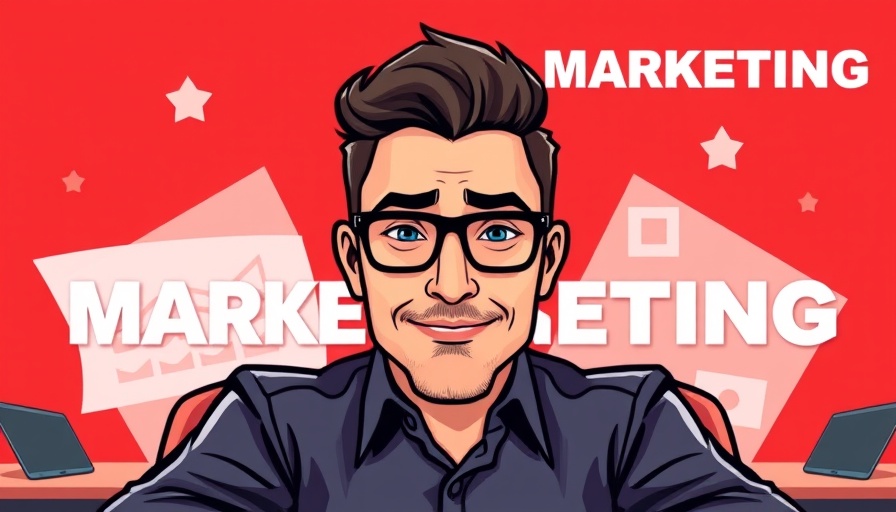
The Fierce Competition for AI Talent
The talent market in the artificial intelligence (AI) sector has become increasingly competitive, with major players such as Meta aggressively pursuing top professionals. Mark Zuckerberg's recent recruitment tactics—offering staggering bonuses of up to $100 million—have raised eyebrows across the tech industry. By targeting industry leaders like Alexandr Wang, the former CEO of Scale, Meta aims to establish a formidable new research hub centered around the development of superintelligent AI.
Understanding the Stakes in the AI Arms Race
As AI technology continues to pivot many industries, the race for advanced AI capabilities is not just about innovation; it's about survival and market dominance. Companies that secure the brightest minds in the field can outpace their competitors significantly. This battle for talent is hence emblematic of a broader struggle for technological supremacy, human capital being the new currency of the digital age.
Meta's Budget: The Controversial Recruitment Offers
Meta’s financial commitment has been nothing short of audacious. Reports of $100 million bonuses may have initially sparked headlines, but the reality appears to reflect a range of high salaries—yet still significantly above the average for many in the tech field. Comparing this with the typical salaries offered by OpenAI, which hover around $100,000 to $200,000, Meta's strategy is clear: outbid the competition, regardless of the cost. This tactic has raised ethical questions within the industry about the future of workplace culture and loyalty.
The Response from Rivals: OpenAI's Concerns
Sam Altman, CEO of OpenAI, has publicly expressed concern regarding Meta’s aggressive recruitment strategies. In a memo to his staff, he described the situation as "somewhat distasteful" and indicated that he viewed Meta's methods as potentially harmful to the industry. Altman believes such methods could create cultural problems within organizations where talent feels more like mercenaries than committed team members. His insights raise concerns about the longer-term effects of this talent war; will swifter financial incentives overshadow commitment and mission-driven work?
The Importance of Company Culture in the AI Field
As the demand for AI expertise escalates, the value of maintaining a positive and united company culture increasingly comes to the forefront. Altman's reflection on OpenAI's internal culture encapsulates this need succinctly. While financial offerings can attract talent, they can also lead to high turnover and dissatisfaction if organization values do not align with employee expectations. Employees at companies like OpenAI often express pride in their mission, seeing their work as part of a larger pursuit—something that monetary incentives alone may fail to address.
Future Predictions: The Potential Impact of Recruitment Wars
Looking ahead, the ramifications of these recruitment wars will affect the entire tech landscape. The more resources companies like Meta allocate towards acquiring AI talent, the greater the pressure on others to follow suit. This could instigate a cycle of inflated salaries and bonuses, potentially destabilizing smaller startups that cannot compete at this level. In the long run, the focus should shift from simply attracting high-profile employees to nurturing talent that aligns with an organization’s core mission and values.
The Broader Implications for Small Business Owners and Consultants
The implications of these changes resonate far deeper than just the major players in the industry. For consultants and small business owners, understanding the dynamics of talent acquisition can lead to pivotal strategies in recruitment and operations. As such investors and companies seek to harness AI's potential, smaller firms might consider fostering unique cultures that emphasize their unique selling propositions. This approach could serve as a counter-narrative in a sea of mercenary talent acquisition strategies that prioritize immediate gains over long-term goals.
Actionable Insights for Navigating the AI Recruitment Landscape
For industry professionals and small business owners, navigating the emerging AI recruitment landscape requires more than just competitive compensation packages. Here are actionable strategies that can help:
- Focus on Cultural Fit: Emphasize shared values and long-term goals during the hiring process to attract individuals who are not just talented but also aligned with your business mission.
- Leverage Unique Offerings: Consider offering unique job perks that resonate with what top talent seeks, such as remote work options or opportunities for innovation.
- Develop Talent Internally: Foster young professionals through mentorship programs that not only enrich their skills but build long-term loyalty within your organization.
- Stay Flexible and Nimble: In today's rapidly changing market, being adaptable to new trends in talent acquisition can offer a competitive edge.
In this complex landscape of AI recruitment, the strategy that wins will not solely revolve around hefty bonuses but will increasingly center on sustainable practices and cultural integrity. Which route will you choose as this race unfolds?
 Add Row
Add Row  Add
Add 




Write A Comment